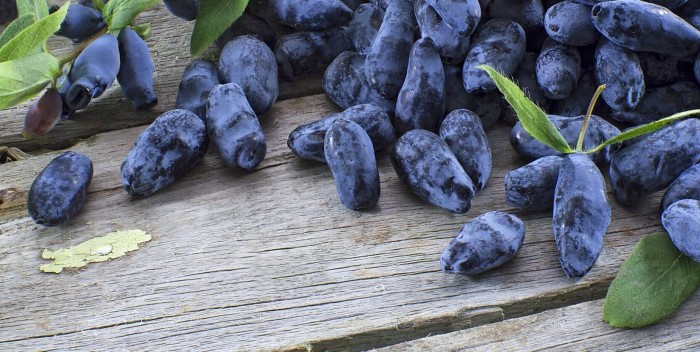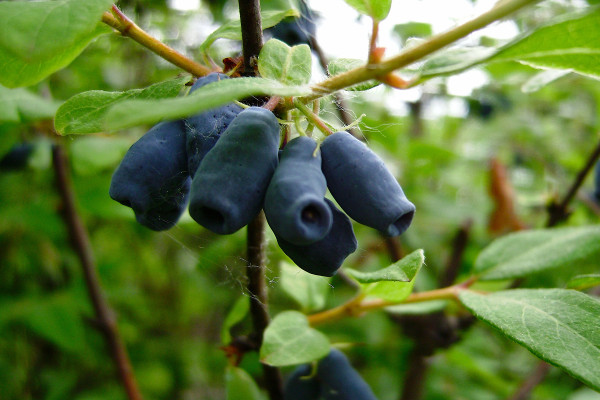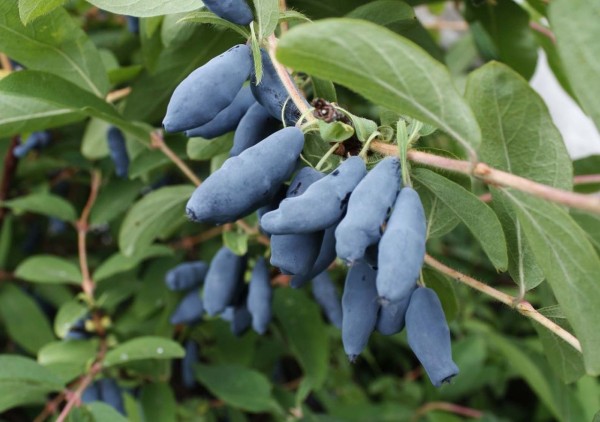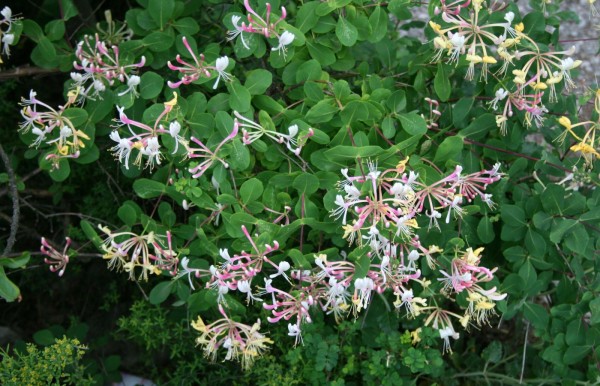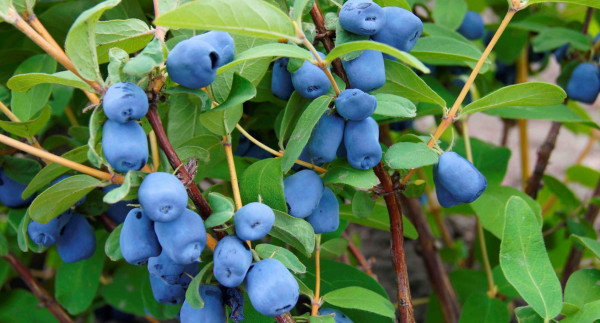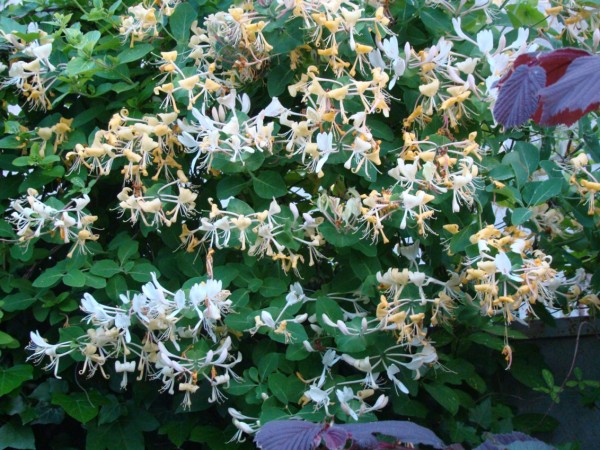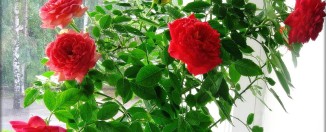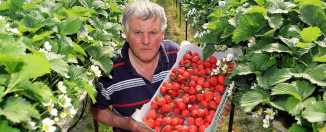Honeysuckle: planting and care
The honeysuckle plant has more than two hundred different species. These are upright shrubs, and climbing, and creeping plants. In natural nature, the largest number of honeysuckle species grows in the Himalayas and in eastern Asia. Now this shrub is grown as an ornamental one.
Content
Planting honeysuckle
For landing honeysuckle is suitable for the spring-summer months, except for the period of active growth. This time falls in May and June. The plant should be planted in the spring before the foliage blooms. In this regard, autumn is considered the ideal time for planting honeysuckle.
Honeysuckle loves light, but the soil should be moist or even marshy. The best site would be a place next to a fence or among other bushes. So the plant will be protected from gusts of wind. Choose an area with fertile loam or sandy loam. Poor soil should be enriched with organic fertilizers, and chalk or dolomite flour should be added to acidic soil.
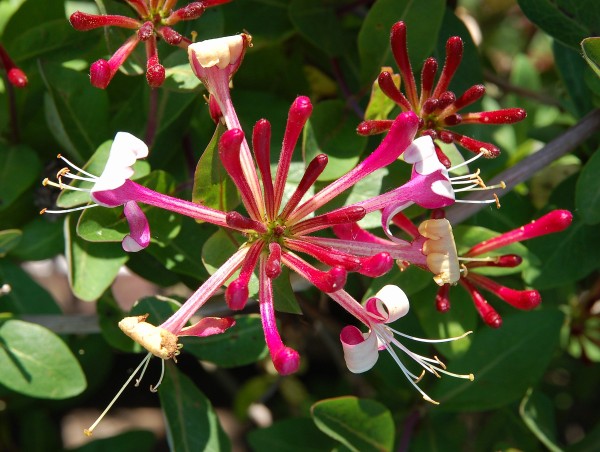 Before planting, take a good look at the selected honeysuckle bush, pay special attention to the root system. Remove broken roots, and shorten very long ones to 30 cm.
Before planting, take a good look at the selected honeysuckle bush, pay special attention to the root system. Remove broken roots, and shorten very long ones to 30 cm.
For planting, dig a hole with sides and a depth of 40 cm. At the bottom of the hole, make a mound by mixing 10 kg of humus, 300 g of wood ash, 100 g of double superphosphate, and 30 g of potassium sulfate. Place a honeysuckle bush on this mound, having first straightened the root system. Cover the roots with earth, compact the soil and form the sides at a distance of 30 cm from the bush. Pour in a bucket of water and wait for it to soak. Then mulch the soil with humus or peat.
Honeysuckle varieties
Russian gardeners fell in love with this plant not only for its delicious fruits, but also for its decorative qualities. The most common varieties honeysuckle are considered as follows:
- The Blue Spindle variety is represented by low bushes with a round sparse crown. It is distinguished by the early ripening of large blue-violet fruits with a bloom. The berries have a sweet and sour taste.
- Another popular and affordable variety for gardeners is the Bakcharsky giant. This variety is distinguished by its large fruits. His bushes are quite tall and spreading with straight green shoots. The berries are up to 4 cm long and asymmetrical in shape.
- Another popular variety is called Cinderella. Its bushes are compact and short. It has thin shoots and large, elongated oval-shaped leaves. This variety is distinguished by a large number of fruits and their high taste.
- Neat, medium-sized honeysuckle bushes of the Morena variety have an oval crown with thin, slightly curved shoots. This variety has large bright green leaves and large fruits with a mild taste and light aroma.
Reproduction of honeysuckle
Garden honeysuckle is usually propagated vegetatively. There is also seed reproduction, but it is not used, since the plant in this case loses all its specific properties.
The easiest way multiply honeysuckle with layering. Gooseberry bushes are planted in a similar way. With this option, at the beginning of summer, you need to dig up the soil around the honeysuckle bush and raise it a little. Then, from the bottom row of shoots, several healthy and strong shoots of the last year should be selected and pinned to the ground with wire. The junction must be covered with a layer of earth. So the layers should remain until spring. During this time, rooting takes place, after which the new plant is separated from the mother by cutting the cuttings and transplanted to another place. After a couple of years, a full-fledged plant is formed from a new bush.
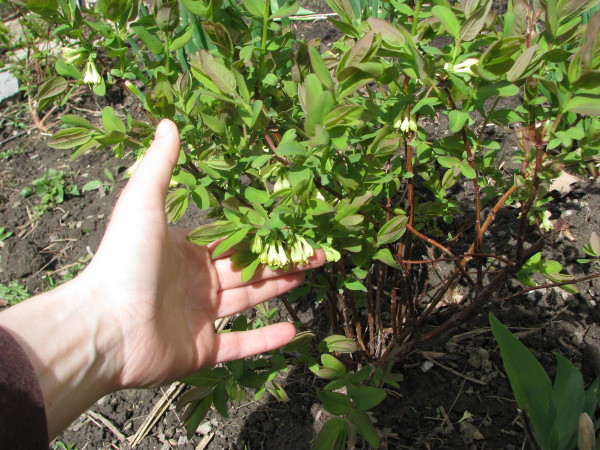 Another popular method involves the use of cuttings. To do this, take the non-lignified green shoots of this year. It is best to cut them in May, after the honeysuckle has faded and the first greenish berries appear. Shoots should be cut obliquely. The length of each shoot should be up to 12 cm. Each cuttings should have up to three internodes. The lower leaves are torn off, the upper ones can be cut off a little. For better root formation, the cut site can be treated with a special preparation. After that, the stalk must be placed in a glass of water for a day. Then the cutting can be planted in the ground.
Another popular method involves the use of cuttings. To do this, take the non-lignified green shoots of this year. It is best to cut them in May, after the honeysuckle has faded and the first greenish berries appear. Shoots should be cut obliquely. The length of each shoot should be up to 12 cm. Each cuttings should have up to three internodes. The lower leaves are torn off, the upper ones can be cut off a little. For better root formation, the cut site can be treated with a special preparation. After that, the stalk must be placed in a glass of water for a day. Then the cutting can be planted in the ground.
To do this, use boxes with a mixture of 1 part sand and 4 parts earth. The soil must be watered and the cuttings should be planted. Then the box is covered with foil and put in the shade for germination. Periodically open the film and air the plants, do not forget to water on time. Until the end of summer, keep the plants under the film, and for the winter, cover the plantings with foliage and on top with snow. In the spring, the plants will begin to grow quickly, then they can be transplanted to a permanent place.
Honeysuckle care
This plant is very unpretentious in leaving... It is enough to water it on time, remove weeds and loosen the tree trunks. From the third year of the plant's life, it must be fed. In the spring, nitrogen-containing fertilizers should be applied or watered with a urea solution. And after the end of the fruiting period, add fertilizing with mullein infusion or nitroammophos. At the end of August, use double superphosphate and wood ash for feeding.
Honeysuckle diseases
Usually, the plant begins to dry out and wither due to the influence of the fungus. It can be ramulariasis, cercospora, tuberculariosis, or powdery mildew. All these fungal diseases are very dangerous, since fungal spores can successfully survive even the coldest winter.
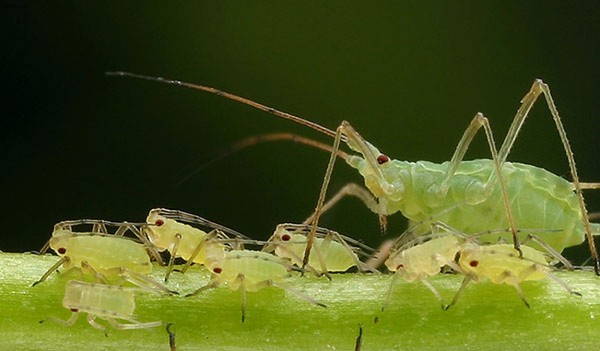 As a preventive measure against these diseases, spraying with a solution of copper sulfate, Bordeaux liquid or other preparations containing copper will help. Infected leaves and branches must be cut and burned.
As a preventive measure against these diseases, spraying with a solution of copper sulfate, Bordeaux liquid or other preparations containing copper will help. Infected leaves and branches must be cut and burned.
Honeysuckle and insect pests are affected. Most often it is a rose leafworm, honeysuckle fingerfly, honeysuckle aphid and others. If such pests are found, the plant should be treated with an insecticide preparation. This should be done only after the end of the fruiting period and in dry weather.
